How Many Chickens Do You Need for a Chicken Farm?
Howdy there, future chicken farmers! If you’ve ever dreamt of having your own chicken farm, you’ve come to the right place. Picture yourself surrounded by clucking hens and fresh eggs, or perhaps the thought of juicy, plump chickens ready for dinner makes your mouth water. But hold your horses! Before you embark on this adventure, you need to figure out the chicken math – how many chickens do you need for a chicken farm? Let’s crack this egg together!


Factors to Consider
Available space and resources
First things first, you’ll need to take a good hard look at your available space and resources. Are you working with a sprawling countryside farm or a compact backyard coop? The size and capacity of your farm will play a big role in determining the number of chickens you can accommodate. You’ll need to assess if your farm has enough room for chicken coops, runs, and all the necessary infrastructure and facilities to keep your feathered friends happy and healthy.
Purpose of the farm
Next up, you need to decide the purpose of your farm. Are you in it for the eggs or the meat? This decision will help you choose the breed and type of chickens for your farm. If you’re aiming for egg production, you’ll want to focus on high-yielding breeds like the Leghorns or Rhode Island Reds, known for their exceptional egg-laying capabilities. On the other hand, if meat production is your goal, breeds like the Cornish Cross or Plymouth Rock are your go-to choices, with their fast growth rate and succulent meat.
Chicken Breeds and Their Productivity
Popular chicken breeds for egg production
Now, let’s talk about those egg-laying champions. Imagine having hens that lay eggs like clockwork, never missing a beat. Well, breeds like Leghorns are just that—egg-laying machines! These ladies are known for popping out eggs like there’s no tomorrow. And if you’re looking for a breed that balances egg production and meat quality, the Rhode Island Reds are your golden ticket.
Chicken breeds for meat production
Regarding meat production, you’ll want to focus on breeds that can bulk up quickly and provide tender, delicious meat. The Cornish Cross, for instance, is a heavyweight in the poultry world. These birds gain weight faster than a race car zooming down straightaway! And let’s not forget the Plymouth Rock breed—steady and sturdy, with meat that’ll make your taste buds dance a jig.
Estimating the Number of Chickens
Egg production farms
Alright, let’s do some chicken math! For egg production farms, there are a few factors to consider. Chickens have laying cycles, which means they don’t lay eggs every single day. So, you’ll need to calculate the average egg production per hen based on their laying frequency. Once you have that number, you can estimate how many eggs your farm wants to produce and calculate the number of hens needed to meet that demand. Remember, happy hens equal more eggs!


Meat production farms
If you’re in the meat business, it’s all about supply and demand. Start by estimating the desired meat output based on market demand. Then, consider the average weight gain and processing time for your chosen breed.
This will give you an idea of how many chickens you need to raise and process to maintain a continuous supply of fresh meat. It’s like a well-choreographed chicken dance – keeping your customers satisfied and your plates full.
Managing the Chicken Farm
Running a chicken farm requires some good maintenance and care. You must provide suitable housing and living conditions for your feathered pals. That means cozy coops with plenty of space for them to roost and nest comfortably.
And remember their dining preferences! Ensure they have access to a balanced diet of chicken feed, water, and the occasional treat to keep those clucks happy.
I won’t sugarcoat it, but chicken health is mighty important. Regularly check on your flock to make sure they’re in tip-top shape.
Keep an eye out for any signs of illness or distress, and if you notice something is not right, don’t chicken out—consult a veterinarian to get your feathered friends back on track.
Planning for expansion and scalability is another crucial aspect of chicken farming. As your farm grows, consider scaling up production based on market demand. It’s like wrangling more chickens into your flock to meet the ever-growing appetite of your customers.
Plus, thinking ahead and anticipating potential challenges will help you navigate any hurdles that come your way, just like a seasoned cowboy riding the range.
Now, partner, you’ve learned the ins and outs of chicken math. Determining the number of chickens you need for a chicken farm is challenging but armed with the right information, you can tackle it like a true rancher.
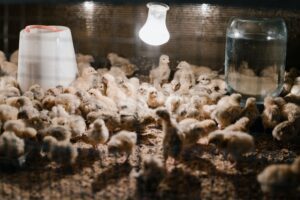

Remember, it’s all about assessing your available space, deciding on the purpose of your farm, and choosing the right breeds for either egg or meat production. Then, through some good chicken math, you can estimate the chickens needed to meet your goals.
But remember that running a chicken farm isn’t just about the numbers. It’s about the joy of caring for these clucking creatures, reaping the rewards of fresh eggs or succulent meat, and connecting with nature’s feathered marvels.
So, saddle up and embark on your chicken farming journey, partner. The farm awaits, and the chickens are clucking in anticipation! Happy farming, all of you!
READ MORE:
What Happens if You Don’t Collect Chicken Eggs? Farming Tips for 2023
Fresh Eggs 101: How long do fresh eggs last?

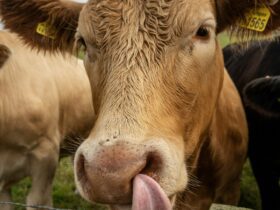
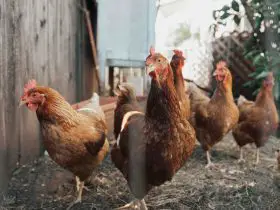

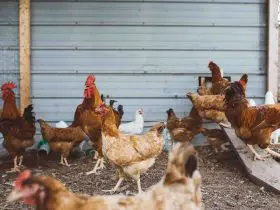



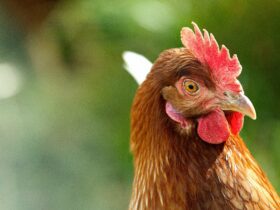



Hello!! Welcome to Anim Farm